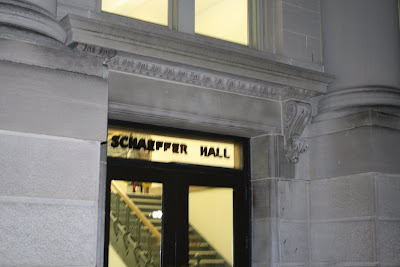
thesis:
The Comanche’s diplomacy was shaped by their continuously burgeoning lust for finished goods, grains, captives, territory and ungulates. The Comanche’s diplomacy, like the tribe themselves, was a fluid entity that could be both a militaristic force and a political juggernaut within the same frame of space and time. Their unrestrained methods of barter, conquest, and treaty making made their diplomacy a unique and diverse system that made their society flourish and, inevitably, crumble.
Quotes:
“Comanches were not, therefore, self-conscious imperialists, following a premeditated expansionist agenda, nor were they all-conquering militarists bent on subjugating other societies. They established their preeminence in stages, responding often in an ad hoc fashion to circumstances that on first inspection seem to have little to do with imperial power politics. Their actions were shaped by the political maelstrom released by European colonialism, as well as by such ostensibly nonpolitical matters as pastures, water, and social prestige. The resultant imperial system reflected that eclecticism. It was based on loose domination and articulated through an intersecting set of coercive and cooperative intersocietal networks aimed at keeping Comancheria protected, prosperous, and powerful. Comanches exercised power on an imperial scale, but they did so without adopting an imperial ideology and without building a rigid, European-style Empire.”
p.352
“I have traced the evolution of a Comanche power complex that was neither shapeless nor formless, a Comanche foreign policy that involved much more than plundering and killing, and Comanche people who were neither savage nor nation less. Instead of merely defying white expansion through aggressive resistance….Comanches inverted the projected colonial trajectory through multifaceted power politics that brought much of the colonial Southwest under their political, economic, and cultural sway.”
p. 345
“But this does not mean that the relations between Spanish New Mexico and western Comanches had become cleansed of contention, for beneath a thin veneer of tranquility the Comanches and colonists were engaged in an intense rivalry. That rivalry was only incidentally a typical Indian-white struggle for subjugation, survival, and territorial control; it was instead a multilayered, essentially imperial rivalry over political sway, the control of labor and resources, and spheres of cultural influence. The result was widespread economic, political, and cultural amalgamation across ethnic lines, amalgamation that was actively embraced by the Comanches and the great New Mexican masses but abhorred by the Spanish and, later, Mexican elites.”
p. 201
“When the war is a general one, with the entire people gathered in tribes to go on the warpath, public authority intervenes. The chiefs assemble in council, and the old men are admitted to provide the lessons they have learned in their long experience. There the whole matter is discussed with sagacity and prudence, and the advantages and disadvantages of each course of action are carefully weighed. If the decision is for war, the rallying points are first established, then the strategy and tactics to be used against the enemy in all foreseeable circumstances.”
p. 280
"Like most empires, the Comanche empire had many faces. Viewed from the north and east, it was an empire of commerce and diplomacy, an expanding transnational nexus that radiated prestige and power, absorbed foreign ethnicities into its multicultural fold, and brought neighboring societies into its sphere as allies and dependents. Viewed from the Southwest and Mexico, however, the Comanches showed a different kind of face. Here their empire brushed directly against Euro-colonial frontiers, and its tactics were often grounded in violence and exploitation."
p. 181
"What the Comanches did not do was to reciprocate Spain's generosity. Their recompense was the absence of violence. Holding a pronounced power advantage over Texas, they seem to have placed the Spaniards in an ambiguous social space where they were not quite friends nor outright enemies"
p. 184
"Comanches' power complex was much more than a military creation; it was also, and indeed primarily, a political construction. Their colonization of the southern plains was a military enterprise built on astute and pragmatic diplomacy. As they swept across the southern pains, Comanches forged a series of strategic alliances, which buttressed their own strength while leaving their competitors variously defenseless and divided....They sustained their long-standing union with the Utes for decades, only to detach themselves from the alliance in the 1750's when the collapse of Apache resistance on the Llano Estacado turned Utes from useful allies into rivals."
p. 65
Exam Question : Describe how the Comanche’s diplomacy lead to the near disintegration and rebirth of New Mexico
Kathryn Young, Brittany Thornton, Julia Field, Jason Jared





























